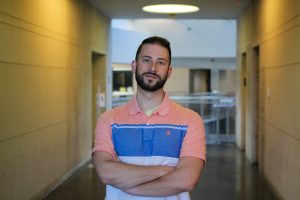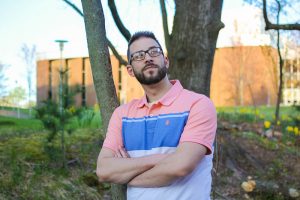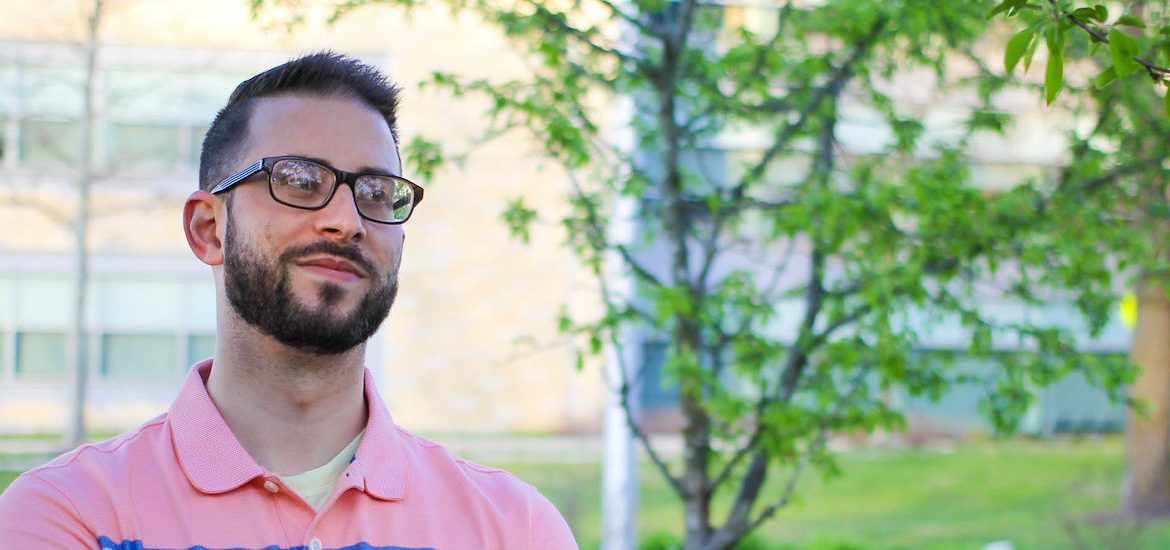
Chris Tirri is a Rowan Global student in the master’s of science program for Urban and Regional Planning. The master’s program at Rowan is his third graduate program overall. Born and raised in the Mantua side of Sewell, NJ (Gloucester County) he currently resides off-campus in Mantua Township. His ideal career would be in historic preservation working with vernacular motel architecture and amusement parks, especially in the Wildwoods. If not in historic preservation specifically, then to work as part of a planning firm or board that specializes in adaptive reuse and helping to promote development that enhances local character and history. He shares with us his knowledge of the popularized concept for “15-minute neighborhoods” and how the COVID-19 pandemic has impacted this plan on the global scale.
The concept of the 15-minute neighborhood has been part of planning vernacular for well over a decade as a way to promote walkability and density in urban areas. While the concept may vary by city, its core goal remains the same: residents should be able to access basic life amenities—school, affordable groceries, parks, and doctors’ offices—within a 15-minute commute by foot, bike, or public transit.
Despite its established presence in planning vernacular, the 15-minute neighborhood has yet to achieve widespread application. But the coronavirus pandemic may very well change that.
In the wake of work- and stay-at-home mandates across the globe, COVID-19 has dramatically changed the way we perceive and use our once-beloved and once-bustling cities. Our sense of place has shifted from city centers to our immediate neighborhoods, home offices, and living rooms, and in many areas, city dwellers have fled their urban enclaves to the surrounding suburbs.
While some outlets have declared the pandemic as the death of the city, the renewed interest in the 15-minute neighborhood promises a rebirth of the city as demand rises to redefine, redistribute, and redevelop city centers as more liveable and as those centers give way to neighborhood centers as more people come to prefer shopping close to home.

One of its main focal points is the overhaul of transportation methods and infrastructure. As peak-commuter traffic continues to trend downward as more jobs become permanently remote, the 15-minute neighborhood necessitates a flexible approach to public transit choices that better accommodate local commuters who use public transit to fulfill daily needs, especially minority commuters who have historically been the victims of divisive planning decisions.
Likewise, it calls for plans that reimagine formerly vehicle-specific streetscapes as places where pedestrians and cyclists can safely coexist and where “streateries” add a newfound vibrancy to downtown life.
Cities as we have come to know them were designed largely with those peak-commuters in mind, so available amenities operated to anticipate heavy influxes in the morning and the evening. However, as William Fulton points out, amenities like restaurants, bars, parks, and other public spaces have become increasingly vital to “daily life, not just after work or on the weekends.” Thus, the 15-minute neighborhood’s focus on resilient mixed-use spaces can support a more consistent use of and demand for recreational amenities that promote health, well-being, equity, and a greater sense of community.
The 15-minute neighborhood hopes to restore the classic planning concept of proximity: of bringing activities to individual neighborhoods rather than forcing people to relocate for those activities. Yet, it is that very sense of proximity that has inspired so many urban residents to seek refuge in private residences in the suburbs.

So how do we reconcile this paradox?
The 15-minute neighborhood seeks to reconfigure our notions of what it means to be a city, as well as the art and process of placemaking by drawing from tactical urbanism and creating a bottom-up approach to planning that reconnects residents in socially-distant yet socially-meaning ways, localizes urban life, and redevelops cities with future resiliency in mind, as well as one that avoids potential pitfalls that reify, rather than dismantle, systemic inequalities.
To avoid those pitfalls, such a reconfigured approach to placemaking must include an individualized approach to cities so that planning properly accounts for context- and situation-dependent differences.Community engagement is key to understanding those differences so that any implementation of the 15-minute neighborhood concept provides residents with the amenities and services they actually want or need.
Without a genuine understanding of individual needs, we risk disengaging the residents we intend to help, gentrifying neighborhoods instead of suitably improving them, and further fueling the flight to the suburbs.
Like what you see?
Story by: Chris Tirri, Rowan Global student, Rowan University, M.S. in Urban and Regional Planning



